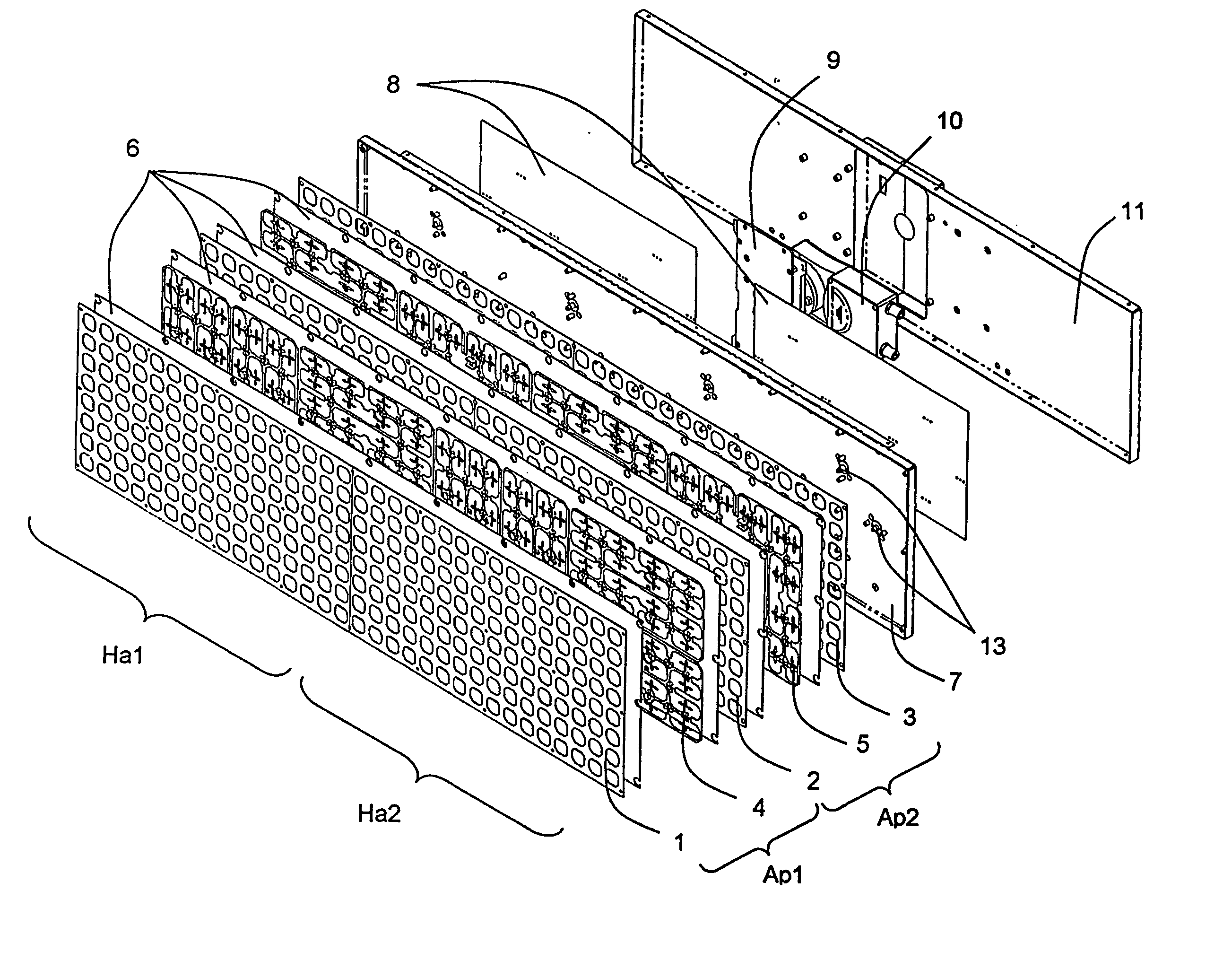Flat microwave antenna
a technology of microwave antenna and antenna body, which is applied in the direction of individual energised antenna array, polarised antenna unit combination, stripline fed array, etc., can solve the problems of inacceptable degradation of antenna performance, achieve low antenna height, facilitate installation, and maintain the effect of aerodynamic properties of the vehicl
- Summary
- Abstract
- Description
- Claims
- Application Information
AI Technical Summary
Benefits of technology
Problems solved by technology
Method used
Image
Examples
Embodiment Construction
OF SPECIFIC IMPLEMENTATION
[0025] The example refers to the preferred application, namely planar active antenna 1-13 (shown in FIG. 1) as a part of a system for in-motion signal reception from satellite on geo-stationary orbit. Hence, the preferred shape of the antenna is rectangular in order to decrease the overall height of the whole system.
[0026] The antenna consists of a high number of radiating elements arranged in rows and columns at appropriate distance and forming antenna array.
[0027] The distance between adjacent elements is about 0.7 to 0.9 wavelengths in free space for the antenna frequency band of operation, e.g. Ku-band (10.7-12.75 GHz).
[0028] The antenna shown on FIG. 1 consists of two separate packages Ap1 and Ap2 for two orthogonal polarizations, layer 8 with low-noise amplifiers used for pre-amplification of the received signal, and block 9 for signal combining. As shown in FIG. 2 the antenna layers 4 and 5 are placed between three grounded metal plates 1, 2 and 3...
PUM
 Login to View More
Login to View More Abstract
Description
Claims
Application Information
 Login to View More
Login to View More - R&D
- Intellectual Property
- Life Sciences
- Materials
- Tech Scout
- Unparalleled Data Quality
- Higher Quality Content
- 60% Fewer Hallucinations
Browse by: Latest US Patents, China's latest patents, Technical Efficacy Thesaurus, Application Domain, Technology Topic, Popular Technical Reports.
© 2025 PatSnap. All rights reserved.Legal|Privacy policy|Modern Slavery Act Transparency Statement|Sitemap|About US| Contact US: help@patsnap.com



